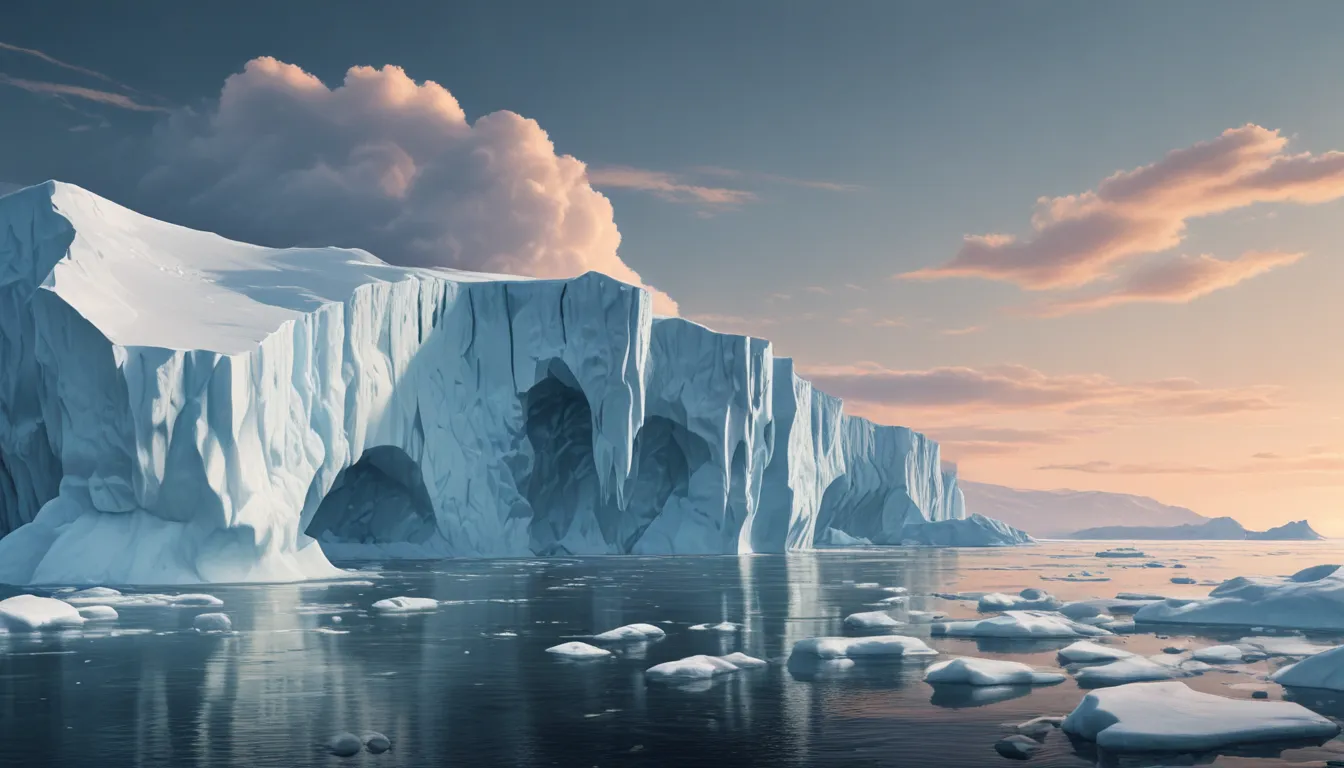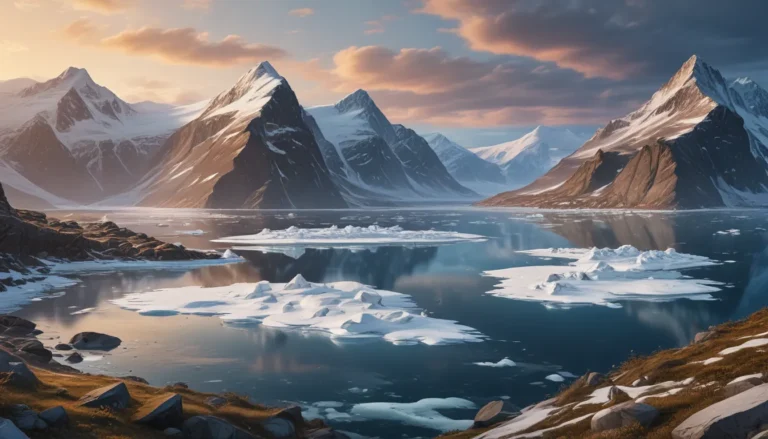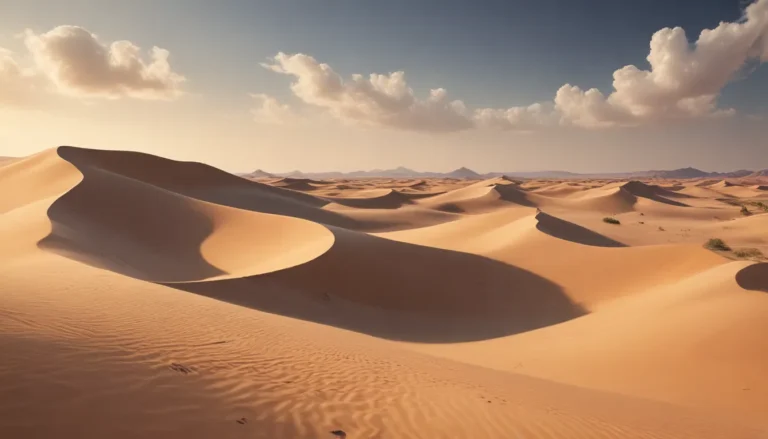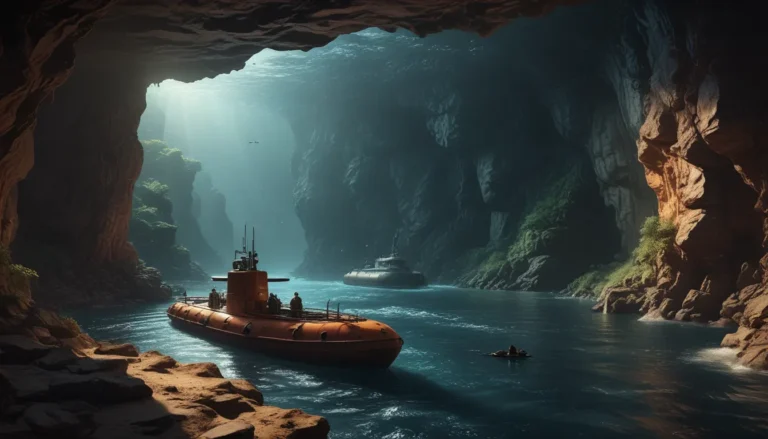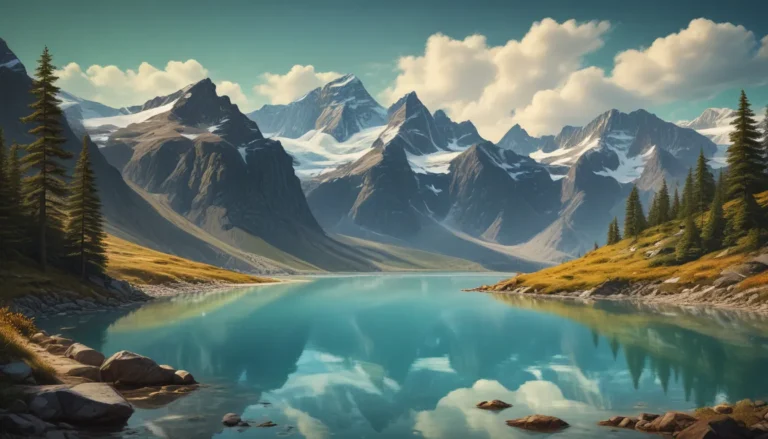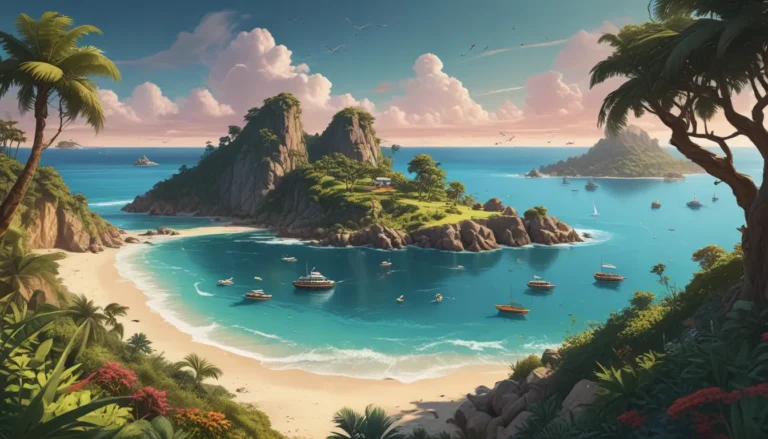A Note About Images: The images used in our articles are for illustration purposes only and may not exactly match the content. They are meant to engage readers, but the text should be relied upon for accurate information.
Ice shelves are majestic structures of ice that extend from coastlines into polar seas, harboring secrets and surprises that captivate scientists worldwide. These massive formations are not just frozen masses; they play a crucial role in the Earth’s ecosystem. In this article, we will delve into nine surprising facts about ice shelves that will leave you in awe and inspired. Whether you are a geography enthusiast, a climate change advocate, or simply curious about our planet’s wonders, these facts will shed light on the importance of these icy giants and their impact on the environment.
Unveiling the Secrets of Ice Shelves:
-
Ice Shelves Are Massive Platforms: Ice shelves are enormous ice platforms that form where glaciers or ice sheets flow down to the ocean surface. They can be thousands of square kilometers in size and reach staggering thicknesses of several hundred meters.
-
Ice Shelves Are Found in Antarctica: The majority of ice shelves are located around Antarctica, the southernmost continent on Earth. Antarctica’s extreme cold temperatures and vast ice sheets create the perfect conditions for the formation of these massive ice shelves.
-
Constantly Changing Landscapes: Due to their contact with the ocean, ice shelves are susceptible to melting and calving. The edges of the ice shelves can melt or break off, causing the overall size and shape of the shelf to change over time.
-
Unique Ecosystems: Despite the harsh conditions, ice shelves support a variety of life forms. Algae and small invertebrates can be found on the underside of the shelves, while birds and marine mammals often use the shelves as resting and breeding grounds.
-
Playing a Role in Global Sea-Level Rise: As ice shelves melt or calve, they contribute to the rise in global sea levels. When ice shelves detach from glaciers or ice sheets, this allows the land-based ice to flow more rapidly into the ocean, causing sea levels to rise.
-
Acting as Barriers and Buffers: Ice shelves can act as barriers, preventing glaciers and ice sheets from flowing directly into the ocean. They effectively slow down the rate at which ice moves, regulating the overall discharge of ice into the ocean.
-
Vulnerability to Collapse: Although massive and resilient, ice shelves can collapse under certain conditions. Rising air and ocean temperatures, along with increased melting, can weaken the structural integrity of the shelves, leading to catastrophic failures.
-
Icebergs Creation: When chunks of ice break off from the edge of an ice shelf, they float away in the ocean as icebergs. These icebergs can be massive in size and present hazards to ships traveling in polar regions.
-
Acting as a Buffer for Glaciers: Ice shelves act as a buffer for glaciers and ice sheets, slowing their flow and preventing rapid ice discharge. They play a crucial role in maintaining the stability of the Antarctic ice sheet and its overall contribution to global sea levels.
Conclusion:
In conclusion, ice shelves are truly fascinating geological formations that play a vital role in our planet’s ecosystem. These icy giants are not just static masses but dynamic entities that interact with their environment in complex ways. From providing a habitat for unique ecosystems to influencing global sea levels, ice shelves are key players in regulating Earth’s delicate balance. It is essential for us to appreciate the significance of these structures and work towards their protection to ensure a sustainable future for our planet.
Frequently Asked Questions:
-
What are ice shelves?: Ice shelves are large masses of floating ice that form when glaciers or ice sheets flow into the ocean, creating a natural boundary between land and water.
-
How do ice shelves form?: Ice shelves form when ice from glaciers or ice sheets flows into the ocean, causing it to float on the water due to the weight pushing against the shoreline.
-
Why are ice shelves important?: Ice shelves play a crucial role in regulating global sea levels by holding back the flow of ice from glaciers and ice streams into the ocean.
-
Are ice shelves affected by climate change?: Yes, ice shelves are vulnerable to climate change, with rising temperatures causing melting, thinning, and collapse, leading to accelerated glacier flow and sea level rise.
-
Can ice shelves regrow once they collapse?: Once an ice shelf collapses, it is unlikely to regrow in the same form, but new ice shelves can form in areas where glacial flow meets the ocean.
-
Do ice shelves have an impact on wildlife?: Yes, ice shelves provide a habitat for various species, including seals, penguins, and seabirds, supporting unique ecosystems in the Antarctic region.
-
How do scientists study ice shelves?: Scientists study ice shelves using methods like satellite imagery, aerial surveys, and on-site measurements to monitor changes and understand the dynamics of these structures.
-
Are there ice shelves outside of Antarctica?: While ice shelves are predominantly found in Antarctica, there are smaller ice shelves in the Arctic, such as the Ward Hunt Ice Shelf in Canada and the Petermann Ice Shelf in Greenland.
-
Are there dangers associated with visiting ice shelves?: Visiting ice shelves can be dangerous due to rapid weather changes, crevasses, and the risk of ice collapse, highlighting the need for caution and experienced guides.
Ice shelves are not just icy territories; they are dynamic landscapes that hold the key to understanding our planet’s ever-changing environment. By unraveling the mysteries of ice shelves, we can gain insight into the intricate relationship between ice, climate, and ecosystems. Let us embark on a journey to explore the wonders of ice shelves and their vital role in shaping the future of our planet.
